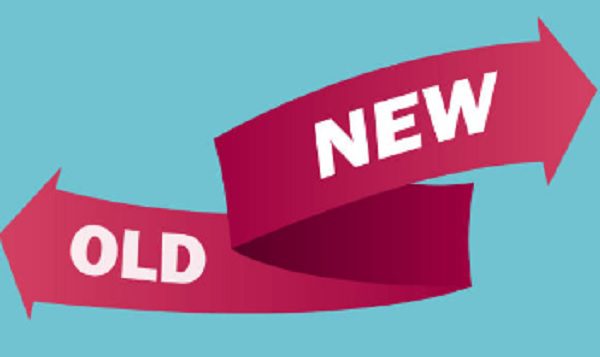When you have opted new tax regime, it’s possible you’ll be questioning whether or not it’s nonetheless useful to put money into PPF, SSY, and NPS. Let’s clear this dilemma.
Buyers are consistently looking out for tax benefits when contemplating an asset or product to put money into. They search out alternatives that supply tax advantages not solely on the time of funding but additionally all through the funding course of and when it comes time to withdraw funds. The attraction of merchandise that present these benefits, generally known as EEE (Exempt-Exempt-Exempt), is plain.

Due to this fact, out of all of the accessible choices, PPF, SSY, and NPS shine brightly due to their tax benefits. Nevertheless, it is very important notice that in case you select the brand new tax regime, you’ll not obtain the identical tax advantages as you do beneath the outdated tax regime. Consequently, some buyers desire to stay with the outdated tax regime and keep away from choosing the brand new one.
For buyers who’ve chosen the brand new tax regime over the outdated one, the query of whether or not to proceed investing in PPF, SSY, and NPS merchandise is a typical dilemma.
Opted New Tax Regime – Ought to I cease investing in PPF, SSY, and NPS?
Let’s redirect our consideration from a single response to individually evaluating every product and coming to a choice.
# Public Provident Fund (PPF)
You most likely already know that this is among the most excellent debt merchandise at present accessible for buyers, providing unimaginable EEE advantages. Nevertheless, it does include a couple of restrictions, comparable to a 15-year lock-in interval and limitations on investments (most of Rs.1,50,000 per 12 months).
When you have set long-term targets that stretch past 15 years, this debt product is ideal for you. Due to this fact, you probably have already began investing with a particular purpose in thoughts and the PPF is a crucial debt element of your asset allocation, it is very important proceed investing with none breaks. You don’t want to hassle about tax advantages accessible or not.
In case your foremost motive for investing was to save lots of on taxes, it’s vital to reassess the product options primarily based in your monetary targets earlier than making a choice. For my part, I like to recommend both persevering with to take a position or holding the account lively with a small contribution.
It’s vital to understand that relying solely on this one product to achieve your long-term monetary goal isn’t a sensible alternative. Due to this fact, it’s advisable to incorporate it as a element of your debt portfolio.
Refer my earlier posts on PPF –
# Sukanya Samriddhi Yojana (SSY)
SSY stands out as a best choice amongst debt devices for securing your lady little one’s future. Consequently, quite a few people are opting to take a position on this scheme as a result of tax benefits it presents each on the time of funding and upon maturity. Nevertheless, for many who have chosen the brand new tax regime, the query of whether or not to stick with investing in SSY might come up as soon as extra.
As to the Public Provident Fund (PPF), it’s value noting that the Sukanya Samriddhi Yojana (SSY) can also be thought of to be a wonderful debt instrument. Nevertheless, it isn’t advisable to solely depend on this explicit product for securing your daughter’s future. That is primarily attributable to the truth that academic inflation is growing at a price exceeding 8%. With the intention to guarantee diversification, it’s important to incorporate fairness investments alongside the SSY.
Therefore, in case you began investing in SSY as a debt a part of your lady little one’s future, then you have to proceed. in case your determination to go for SSY as an funding is solely for tax advantages, it’s advisable to rethink.
Learn my earlier posts on SSY –
# Nationwide Pension System (NPS)
It’s designed that can assist you obtain your retirement purpose. Nevertheless, quite a few people disregard its objective and as an alternative put money into NPS solely to reap the benefits of the additional tax advantages. You will need to understand that NPS has its personal set of execs and cons as nicely. (Discuss with my earliest submit – “Nationwide Pension Scheme (NPS) – 5 Largest Disadvantages“).
Investing in NPS solely for the aim of tax saving shouldn’t be your solely consideration. As an alternative, prioritize discovering an funding choice that fits your particular person wants. In the event you genuinely imagine that NPS is the perfect retirement product for you, then proceed with it. Nevertheless, if you’re already a subscriber to NPS and have doubts, it might be sensible to contribute a minimal quantity. In my submit (hyperlink shared above), I’ve outlined the the explanation why I’m not notably keen on NPS.
Conclusion- Tax planning is an integral part of monetary planning. Nevertheless, in case you funding selections solely primarily based on tax advantages, then this may increasingly result in poor funding selections. It’s essential to fastidiously consider every product or asset, contemplating each its benefits and drawbacks. Be sure that the options align together with your monetary targets earlier than making any selections. Keep away from making hasty selections merely due to a brand new tax regime.
